Seongbuk-dong Jip(성북동집)
3.9Km 2020-12-24
4 Seongbuk-ro 24-gil Seongbuk-gu Seoul
+82-2-747-6234
This restaurant in Seongbuk-dong is famous for its Kalguksu (chopped noodle soup) and dumplings. This restaurant's signature menu is noodle soup. This Korean dishes restaurant is located in Seongbuk-gu, Seoul.
Haeunjae / 하은재
3.9Km 2025-08-12
68-10, Jahamun-ro, Jongno-gu, Seoul
Haeunjae (下隱齋), meaning “hermit’s residence,” is a hanok (traditional Korean house) residence located in Seochon Hanok Village, near Gyeongbokgung Station on Seoul Subway Line 3. It is dedicated to the ideal of “movies and rest,” and takes after the characteristic form of modern hanok with a small courtyard. The entire house is rented out at once, with a queen bedroom, kitchen, movie room, and two restrooms. Up to 4 guests can reserve the house, with each additional guest above the standard of 2 having access to additional bedding.
The movie room is furnished with a Bose sound system, beam projector, and screen, along with a mobile foot bath. The kitchen is equipped with a refrigerator, hand drip coffee maker, toaster, electric kettle, and utensils. A 10% discount is available for guests staying for more than 2 nights on weekdays, and towel replacement and cleaning services are offered for guests staying for more than 3 nights.
The residence is located close to tourist sites like Tongin Market, Gyeongbokgung and Changdeokgung Palaces, and Samcheong-dong area.
Seongbuk-dong Jip (성북동집)
3.9Km 2021-03-29
4, Seongbuk-ro 24-gil, Seongbuk-gu, Seoul
+82-2-747-6234
This restaurant in Seongbuk-dong is famous for its Kalguksu (chopped noodle soup) and dumplings. This restaurant's signature menu is noodle soup. This Korean dishes restaurant is located in Seongbuk-gu, Seoul.
Marché de Tongin (통인시장)
3.9Km 2022-12-13
18, Jahamun-ro 15-gil, Jongno-gu, Seoul
+82-2-722-0911
Le marché de Tongin a été crée en juin 1941 sous l’occupation japonaise. Après la guerre du 25 juin, le région de Seochong a connu une hausse de la consommation causée par la soudaine croissance démographique. Des boutiques et des magasins se sont créés sous forme de marché public.
Le marché public Tongin se compose de 75 restaurants dont principalement des restaurants et des magasins de banchans (petits plats d'accompagnements) qui livrent des produits frais : poissons, fruits et légumes. D’autres commerces de vêtements, chaussures et retouches sont présents sur le marché.
Suyeonsanbang (수연산방)
4.0Km 2016-12-16
8, Seongbuk-ro 26-gil, Seongbuk-gu, Seoul
Suyeonsanbang, a traditional Korean tea house located in Seongbuk-dong, was originally the house where the late Korean author Lee Tae-Jun wrote many of his books. Now, his estate has opened Suyeonsanbang’s doors to the public in the form of a charming and peaceful tea house. Famous for its savory tea, beautiful nature, and rich history, Suyeonsanbang has been covered by a variety of foreign media outlets like NHK (Japan), BBC (UK), French TV channels, and numerous Japanese magazines. To take a break during the summer heat, visitors come to Suyeonsanbang to try their patbingsu (shaved ice with red beans), one of its summer specialties. So come relax and be inspired in this traditional Hanok tea house.
Musée de l’usine de traitement des eaux de Séoul
4.0Km 2020-07-31
642 Seongsu 1-ga 1-dong, Seongdong-gu, Séoul
+82-2-3146-5921
L’usine de traitement des eaux de Ttukdo est composée du musée de l’usine et du bassin du filtre à sable. Celle-ci est le fruit du travail de deux Américains, Collbran et Bostwick, qui ont obtenu un brevet du gouvernement coréen pour une installation de traitement des eaux en décembre 1903, ont débuté les travaux en août 1906 et les ont terminé en août 1908. C’est le tout premier bassin hydrographique de Corée, et il est composé en partie de pièces américaines et anglaises.
Lorsqu’elle a été achevée, l’installation pouvait traiter 12 500 tonnes d’eau en une journée, et approvisionner quelque 165 000 habitants de Séoul. Le taux de purification était à l’époque de 32%. Le réservoir d’alimentation en eau mesure 312,4 m², et possède des murs de brique, un toit de tuile et une porte d’entrée de granite en forme d’arche, qui représentent un parfait exemple d’architecture moderne. L’usine de traitement des eaux, reconvertie en musée, ainsi que le bassin de filtragage par le sable, ont été enregistrés comme Trésor culturel n° 72 par la ville de Séoul.
Village Seochon (서촌마을)
4.0Km 2021-07-14
45, Pirundae-ro, Jongno-gu, Seoul
Le village Seochon se situe à l'est du palais Gyeongbokgung. Il s'agit d'un lieu composé à la fois de maisons traditionnels hanok, de petites ruelles paisibles, mais aussi de nouveaux magasins qui forment une très belle harmonie dans le village. En parcourant les nombreuses petites ruelles des lieux, vous pourrez aussi apprécier plusieurs peintures murales très colorèes. Ce village se distingue donc par son côté à la fois pittoresque mais aussi raffiné.
Mont Inwangsan (인왕산)
4.0Km 2020-08-19
29, Inwangsan-ro 1-gil, Jongno-gu, Seoul
+82-2-2148-2834
Le mont Inwangsan abrite toujours les terrains rituels du roi Taejo et Muhakdaesa, ainsi que les remparts construits dans la périphérie de Séoul, qui s’étendent du tunnel de Sajik jusqu’à la porte de Jahamun. De nombreuses personnes aiment faire de la randonnée sur le sentier qui démarre du tunnel de Sajik et conduit au sommet de la montagne, puis longe les remparts pour aboutir à Buamdong. Le parcours de randonnée est également relié à la route qui se trouve devant Cheongwadae, ce qui permet aux randonneurs de visiter des monuments historiques comme les routes de Palpan et de Hyoja, ainsi que le palais de Gyeongbok. Le sentier de randonnée situé derrière le parc de Sajik conduit à Hwanghakjeong, où les archers de la dynastie Joseon faisaient montre de leur adresse au tir. Hwanghakjeong se trouvait à l’origine dans le palais de Gyeongbok, mais il a été déplacé dans la montagne. Le sommet offre une vue panoramique des environs, avec au centre le palais de Gyeongbok, et s’étend aussi loins que les montagnes Nak, Nam et Baegaksan.
L’itinéraire de randonnée qui longe les remparts est apprécié pour la beauté des paysages que les promeneurs peuvent admirer tout en escaladant la montagne. En suivant le passage qui se trouve à l’intérieur des remparts, on peut apercevoir une volée de marches de pierre après avoir dépassé Changuimun. En montant ces marches, le passage fait un coude vers l’extérieur des remparts. Il continue pendant 200 m et conduit vers un amoncellement de rochers autrefois utilisé pour bâtir des châteaux pendant le règnes des rois Taejo, Sejong et Sukjong. L’épaisse mousse sombre qui recouvre ces pierres témoigne de la longue histoire de Séoul. Le passage mène également au château de Tangchundae. Celui-ci a été construit pour renforcer les defenses de la ville après l’invasion japonaise de 1592 et la guerre contre les Mandchous en 1636.
Le mont Inwangsan culmine à une hauteur de 338,2 m et couvre les quartiers de Honghedong dans l’arrondissement de Seodaemungu ainsi que Muakdong, Nusangdong, Ogindong et Buamdong qui se trouvent à Jongnogu. Des formations rocheuses uniques et colossales, ainsi que la vue sur Séoul et Cheongwadae représentent quelques-uns des nombreux charmes du mont Inwangsan.
Fleuve Han (한강)
4.0Km 2021-01-28
257, Gangbyeonbuk-ro, Seongdong-gu, Seoul
+82-2-120
Le fleuve Hangang s’écoule à travers la ville de Séoul et les provinces du Gyeonggi-do, du Chungcheongbuk-do et du Gangwon-do. Depuis 5 000 ans, il charrie les joies, les peines et la vie entière du peuple coréen. Les berges du fleuve sont l’un des parcs préférés des Séouliens.
Le fleuve Namhangang, qui est l’embranchement principal du fleuve Hangang, prend sa source à Geomyongso, Changchuk-dong, Taebaek-si dans le Gangwon-do. Il s’écoule vers le nord sous le nom de Golchicheon, dans le village voisin de Hajang-myeon à Samcheok-si. Il passe par le barrage de Gwangdong et rejoint la rivière Imgyaecheon qui prend sa source dans la montagne Seokbyeongsan (1 010 m d’altitude). A Yeoyang-ri, Buk-myeon, Jeongseon-gun il rejoint la rivière Songcheon qui prend sa source dans le mont Hwangbyeongsan (1 407 m) et devient le fleuve Joyanggang, qui s’écoule vers l’Ouest. Lorsqu’il se dirige vers le sud, il rejoint la rivière Odaecheon et prend le nom de Donggang. A Yeongwoleup, le fleuve Donggang rejoint les rivières Pyeongchanggang et Jucheongang pour devenir le fleuve Seogang. Ensuite, il rejoint la rivière Dalcheon à Chungju, les rivières Seomgang et Cheongmicheon à Wonju-si dans le Gangwon-do et à Yeoju-gun dans le Gyeonggi-do, et les rivières Yanghwacheon, Bukhacheon et Heukcheon. Finalement, il rejoint le fleuve Bukhangang à Yangsu-ri.
Le pont Yukgyo de la station Yongdap 용답역 육교 (외국어 사이트용)
4.0Km 2017-01-24
Seoul, Seongdong-gu, Salgoji-gil 159
Le pont Yukgyo (ligne 2, station Yongdap) est un lieu de passage privilégié du quartier autour de la station. Le lieu est notamment devenu célèbre après son apparition dans le drama Dokkaebi (2017).
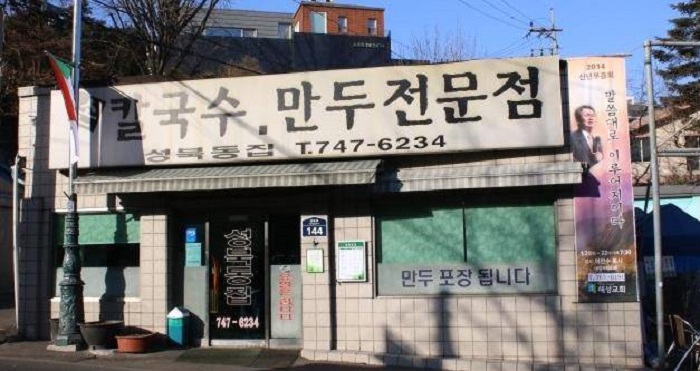
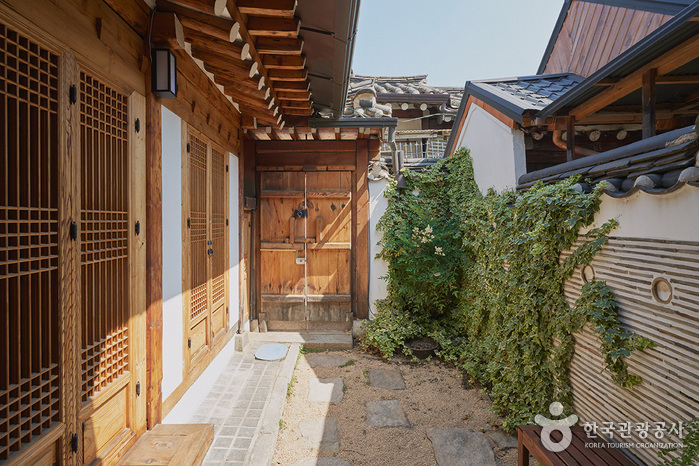

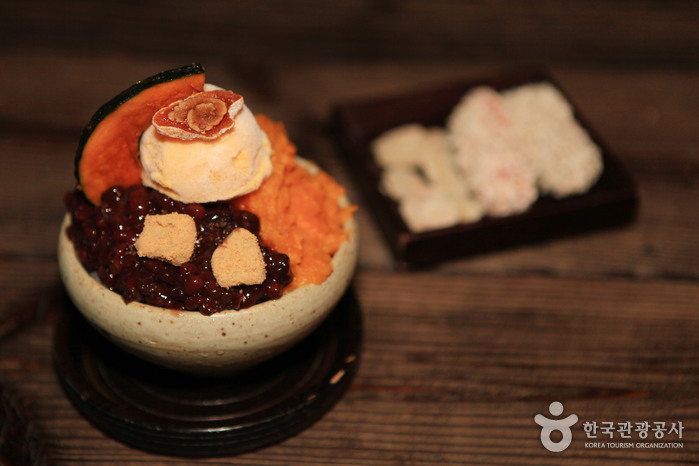
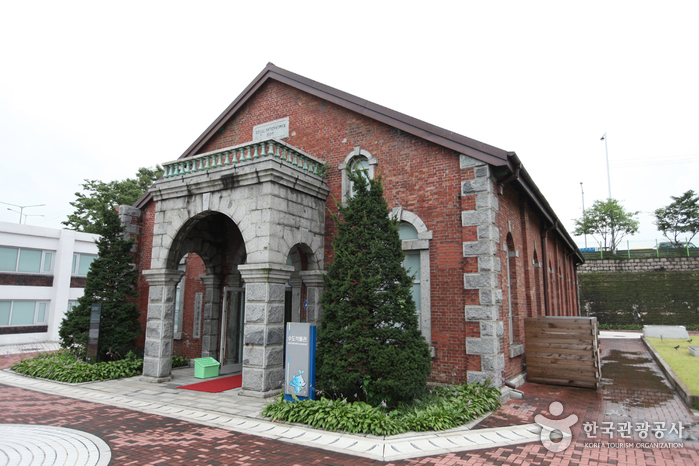
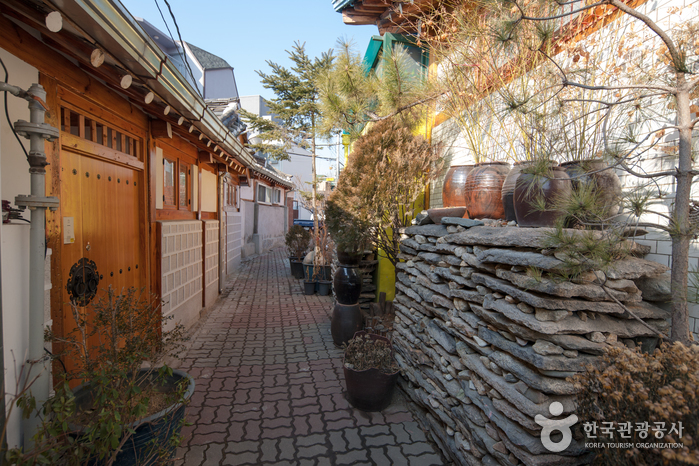
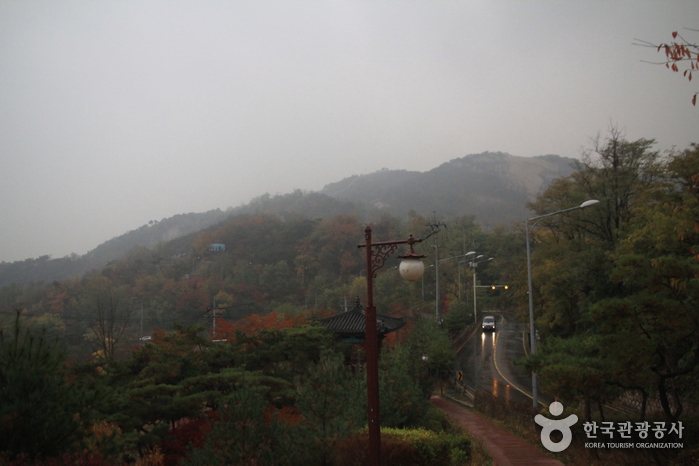
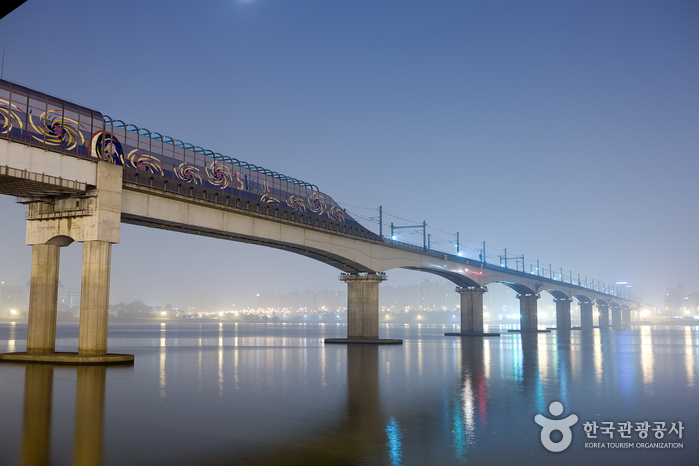
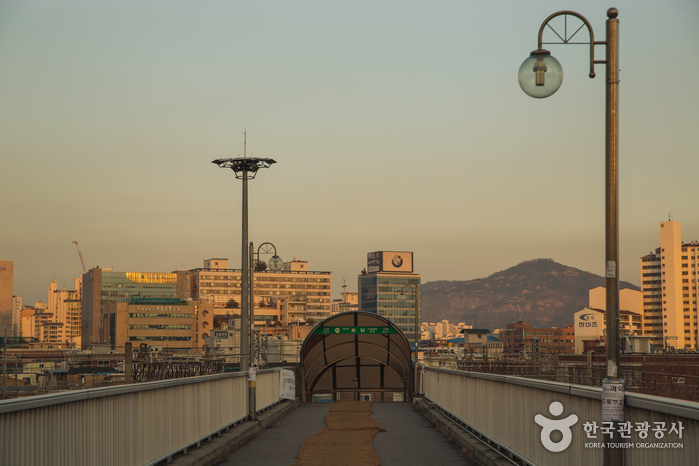
 Français
Français
 한국어
한국어 English
English 日本語
日本語 中文(简体)
中文(简体) Deutsch
Deutsch Español
Español Русский
Русский